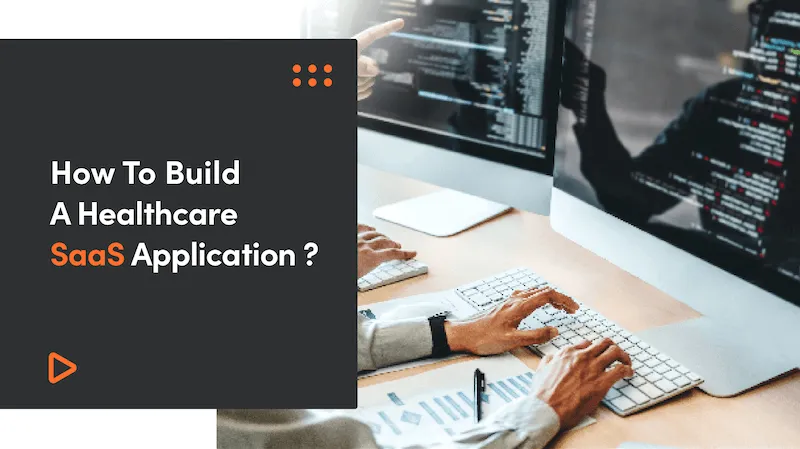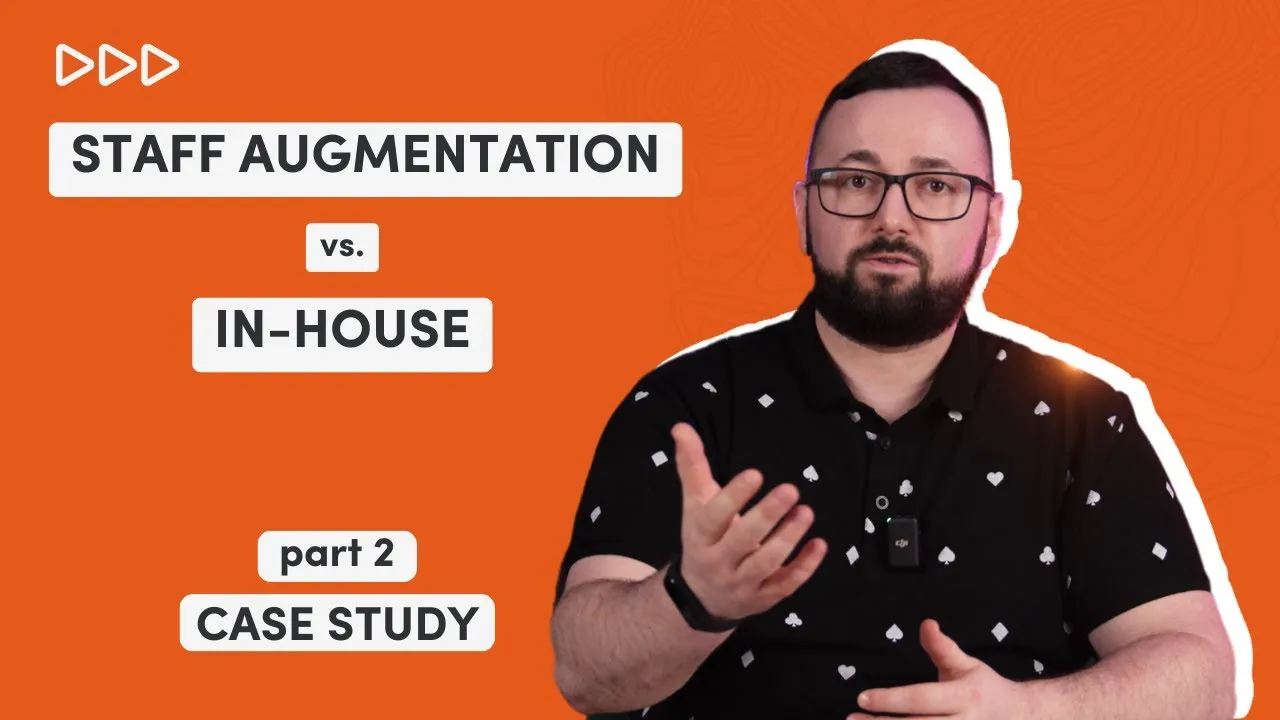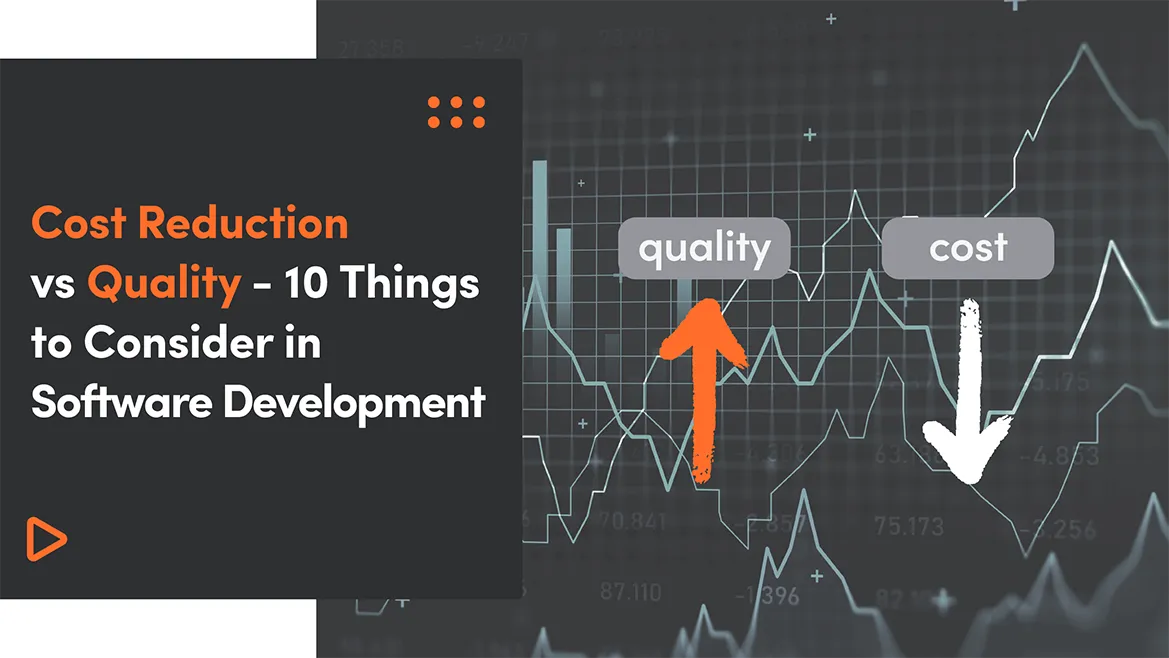Running a healthcare business is a huge responsibility. The business needs cost reduction and process optimizations, but people who own and run a healthcare business are responsible for their patients. These business owners need to ensure that their patient experiences are superior and their staff has a smooth workflow. What else could be a better method to improve operational efficiency without spending a hefty amount of money than adapting to the latest technology? The SaaS model is the newest technological trend in the healthcare industry.
According to Zion Market Research, the healthcare cloud computing market was valued at approximately USD 18.85 billion in 2018 worldwide. It is expected to expand to USD 61.84 billion by 2025, at a CAGR of around 18.7% by the end of 2025. The major factors driving SaaS models' growth in healthcare are IoT, wearable devices, and big data analytics.
SaaS stands for Software As A Service. This article will discuss the SaaS Model in Healthcare and revolutionize the industry at a greater pace.
What is SaaS Software?
Software as a service (or SaaS) is a method of distributing applications as a service over the Internet. Instead of downloading and managing software, you use the Internet to access it, eliminating the need for complicated software and hardware management.
Web-based software, on-demand software, and hosted software are all terms that are used to describe SaaS solutions. SaaS applications, regardless of their name, are hosted on the servers of a SaaS provider. The provider is in charge of the app's security, availability, and efficiency.
What is Healthcare SaaS?
Let's take a look back at the cloud situation from a few years ago. Cloud used to be a frightening concept back then.
Due to security concerns, healthcare Software-as-a-Service (SaaS) solutions initially received a lot of criticism. Healthcare companies are beginning to see the benefits now that more precautions have been put in place.
Many healthcare organizations use SaaS to implement cloud-based EHRs (electronic health records) because it is more cost-effective. They have started rolling out SaaS apps through their hospitals. EMR (electronic medical records), EHR (electronic health records), PACS (picture archiving and communication system), and telehealth are only a few of the applications available. RCM, billing, supply chain, and others are examples of nonclinical information systems.
SaaS healthcare growth in 2022-23

The global healthcare market is rapidly growing. The market is estimated to grow from $6,872.86 billion in 2021 to $7,451.75 billion in 2022, with a CAGR of 8.4%. Similarly, SaaS products are getting more popular in the software industry than other techniques.
Similarly, the software as a service (SaaS) market is expected to grow from USD 130.69 billion in 2021 to USD 716.52 billion in 2028 at a CAGR of 27.5% during the forecast period.
Outlook of SaaS Healthcare Product
Healthcare SaaS solutions are more prevalent and will grow in popularity in the future due to cost, security, and scalability benefits.
Healthcare services providers are rapidly integrating SaaS in their EHR systems, clinical information systems, storage, archiving, remote patient monitoring systems, PACS, population health management, revenue cycle management, analytics, supply chain management, patient-facing web, disaster recovery, and precision medicine.
Revenue
According to Research, the global healthcare cloud computing market is valued at approximately $18 billion. The market is estimated to be worth $61 billion by the end of 2025, with a CAGR of 18.7%.
Top benefits of SaaS for healthcare organizations
SaaS has impacted the healthcare industry and healthcare professionals and improved the workflow by reducing cost and time and providing the best experience to clients. Here are some of the key benefits of SaaS in the healthcare industry.

Benefit # 1: Cost-Effective
Healthcare technologies are costly, and since the healthcare industry deals with highly confidential details, it cannot afford to sacrifice productive functionality to save a few dollars. On the other hand, healthcare institutions profit from SaaS because they do not have to bear any of the following costs:
- Cost for maintenance
- No heavy hardware required - setup cost saved
- Costs to update the hardware
- No huge initial investment
Benefit # 2: Scalability
Since SaaS applications are generally cloud-based, they are extremely scalable. As a result, healthcare organizations don't have to worry about scalability because they can easily scale up or down their applications based on their business's growth.
Benefit # 3: Data security
Medical institutions may use SaaS applications to access a variety of security features to protect patient data. There are also many compliances and regulations in place, such as HIPAA, to ensure that confidential health records and sensitive data are kept private and secure.
Benefit # 4: Back-ups
Regular backups are one of the key aspects of SaaS applications. When using on-site data servers, the institute is accountable for all backups and runs the danger of losing all data if the servers fail. This is not the case with SaaS applications, which backup all data regularly. As a result, all medical data can be quickly recovered in the event of a problem.
Benefit # 5: Real-Time Updates
Healthcare institutions can ensure that they have the correct information by using SaaS applications, allowing for real-time notifications. It ensures that all specialists working on a patient's case can consult on his reports and communicate regularly. Every specialist would have access to the most recent details, allowing them to provide better treatment.
Benefit # 6: Accessibility
Authorized members and medical professionals can view information from anywhere, at any time, using SaaS applications. It is particularly relevant because doctors can communicate with one another about a patient's case from afar. Patients and doctors can now interact freely without worrying about not having access to the most up-to-date records.
Let's look at how you can ensure HIPAA compliance in your SaaS application now that you've learned about the advantages of SaaS in healthcare.
Checklist of HIPPA Compliance
Protecting the patient’s information is the key job for healthcare institutions. To keep strict checks and ensure the utmost security, HIPPA Compliance has been formed. However, healthcare institutes often fail to comply with HIPAA properly, leading to hefty fines for them.
HIPAA has specific requirements that address the guidelines to follow for the security of PHI. In case of a breach, an investigation takes place to identify the cause of the breach. To get more information about HIPAA guidelines and Checklists, kindly read our detailed blog on “How to become HIPPA Compliance.”
The Top Trends in SaaS Healthcare Software Development
Following are the top trends in SaaS Healthcare software development industry:
Smart Artificial Intelligence (AI) Solutions
Many successful technology companies are using artificial intelligence to automate business processes, resulting in increased productivity and performance. According to experts, about 81% of companies are now working on AI technologies.
Artificial intelligence (AI) is transforming care delivery through natural language processing (NLP) and machine learning (ML). Algorithms are used in machine learning to decode data and identify patterns. It can process vast volumes of data, learn from it, and predict outcomes. It enables systems to respond to their surroundings rather than being specifically programmed to perform a series of actions.
How AI technology can help Improve SaaS in the healthcare industry?
AI automation can support healthcare SaaS businesses in many different ways. At first, it initially alleviates fears about security breaches. The ability to identify patterns facilitates the detection of possible threats. The best part is that there's a self-recovery feature that can assist with critical data recovery.
The NLP facet can also assist in the detection of voice control and human speech patterns. This type of program will assist in meeting client needs and improving customization.
Another dimension is machine learning, which is widely used in customer service applications. The use of chatbots can be beneficial. Finally, AI-enabled SaaS allows for increased responsiveness and the ability to make accurate predictions at high speeds.
Multiple Clouds in One SaaS Model
According to experts, the number of businesses using cloud-based software will rise by 19.6%.
With new SaaS trends, healthcare companies can address some of their most difficult issues. Many businesses that use Platform as a Service (PaaS) can benefit significantly in 2020 and beyond.
Companies may improve their ability to store, process, evaluate, and protect critical healthcare data using multiple cloud providers. Several cloud services are used for contingency planning. APIs such as Google Health have made an exciting leap. By utilizing big data in a new way, businesses could unlock the true value of healthcare data.
You can continue to use Google's multilayered security solution, which incorporates cutting-edge security features such as data loss prevention, identity protection, encryption, and more.
Security - The Most Focused Attention
Healthcare companies all over the world are concerned about data protection. Concerns about cloud-based data breaches have arisen as patient health records have been digitized and stored in the cloud. It's important to have a security model to monitor and track data and traffic to and from the cloud.
Using a multi-cloud strategy has its advantages. However, there is a risk that new security complexities will emerge. Such complications may become more prevalent as companies shift from an Infrastructure as a service (laaS) understanding of a single cloud to an understanding of PaaS and SaaS.
Concerns about data protection are legitimate. As a result, in 2020 and beyond, businesses will have a greater need for cloud protection.
Vertical SaaS
Another exciting trend that will catch on in 2020 is vertical SaaS. Horizontal SaaS is a form of SaaS that can be used in any industry or field. As a result, it is more widely used than its equivalent. Vertical SaaS is a form of SaaS that focuses on a single sector, like healthcare.

Concentrating on a single vertical will assist in the development of lighthouse customers or supply chains. It's easier to focus on specific issues, and it provides customizable solutions tailored to the needs of businesses, all while incorporating expert experience.
With its custom solutions, vertical SaaS solutions will become a rising focus in the B2B world.
Vertical SaaS applications include healthcare BI software, modern logistics analytics, and retail analytics software, to name a few. Because of their ability to customize, the advantages of specialization are more cost-effective.
Amplified API Connections
APIs (Application Programming Interface) is the next big thing in healthcare SaaS. There is a greater need to incorporate healthcare SaaS into current business processes as healthcare SaaS usage grows.
API-first products are more extensible, easier to integrate and encourage a larger community around possible use cases. APIs should no longer be considered a thing of the future; they must now be a key component of your overall plan.
Although some businesses prefer to move their data to a different cloud platform entirely, others prefer to integrate their data with their current infrastructure. However, there is no certain way to incorporate data completely.
You may wish to enlist the assistance of a cloud provider, which is fantastic! Here's a list of short questions to bear in mind for more smooth integration.
- Can a healthcare business integrate the legacy system seamlessly?
- How to protect data during the integration process?
- Can the cloud provider help incorporate the SaaS within an existing business system?
It's always a good idea to learn more about whether you want to invest in a third party. Having your answers before investing will assist you in making fast and accurate decisions.
Migrating to the PaaS Landscape
You can anticipate a change in the SaaS (software-as-a-service) landscape to PaaS (platform-as-a-service). What is the reason for this? PaaS is more appealing since many developers specialize in healthcare applications and concentrate on patient retention and acquisition.
PaaS enables businesses and organizations to build custom apps with a software development kit (SDK). Custom health apps will support mid-sized medical practices with a sizable IT department. Such organizations should consider PaaS as a healthcare cloud solution.
The cloud solution will provide a secure environment for web-based services and cloud application deployment.
Micro-benefits from Unbundling SaaS
Have you heard of micro-SaaS? Micro-SaaS companies, on the other hand, are typically managed by small teams of as few as two workers.
Complimentary add-ons to current technologies and existing networks are common items sold by such companies. The add-ons, on the other hand, are very appealing because they help boost missing functionality and enhance existing SaaS items.
In 2020 and beyond, you should expect to see miniature SaaS offerings. According to a Spok survey, 63% of hospitals surveyed used six or more SaaS applications.
That's extremely inspiring. As a healthcare business owner, you may want to think about implementing micro-SaaS and reaping the benefits.
Transforming Healthcare with Edge Computing
The medical industry would greatly benefit from edge computing applications. Edge computing brings data centers closer to where people use them. Fog computing, which is a norm that governs how they operate, is needed for its implementation.
Since the equation is nearly identical to that of SaaS, fog aids edge computing in the same way as cloud aids SaaS. Running networks, computing functions, and storage between end devices and cloud data centers can be made easier with a decentralized IT architecture.
Edge computing is ready to become a data-generating machine for big data in healthcare.
Forrester says that almost 27% of global decision-makers in telecommunications have indicated their intention to extend or use edge computing in their operations.
Pay-Per-Use
Subscription-based business models are popular among SaaS vendors. They charge consumers a monthly or annual fee for using their services. Customers and vendors would profit from the model.
However, several vendors have recently shifted to a pay-per-use (PPU) model. The payment model is particularly advantageous for healthcare organizations that provide temporary services. If you're a healthcare start-up with cash-flow problems, such pricing models are perfect for you.
DaaS Revenues
In 2020 and beyond, with the growing use of AI, about 30% of companies will begin generating revenues for data as a service (DaaS). The study further highlights the integration with AIs between about 75% of commercial business solutions and more than 50% of users.
For healthcare organizations, the trends are positive and will result in a major paradigm change. It's time to harness the disruptive force of patterns and apply them to your healthcare operations.

How to Develop a Healthcare SaaS Application?
Creating a healthcare SaaS application necessitates a significant amount of collaboration, preparation, and resources. Here are five steps to building a SaaS application that you should obey. With the aid of an example, these steps have been clarified.
Let’s discuss all the steps one-by-one involved in developing a Healthcare SaaS application:
Step # 1: Planning
Planning is the first move, and it entails determining your needs. You need to know what problem you're trying to solve and what you're hoping to get out of a healthcare SaaS solution. To make the application simple to use for the end-user, you can decide who will be the end-user and what functionality you want to add to it. Hiring a healthcare technology consulting company can help you map out all of your needs precisely.
Identifying your target audience allows you to finalize your SaaS application's architectural specifications and features more specifically.
Step # 2: Privacy and Security - The Important Factors
After reviewing the specifications, the development company will come up with a list of factors that influence the system's efficiency and quality. Let’s say this list may contain the fact that the application should be simple to use, provide a stable service environment, and accommodate multiple users, authorized access, cloud-based resource sharing, and error security.
Once you've finished organizing, you'll need to complete all of the documentation.
Step # 3: Complete the Documentation
Before moving on to any development process, the second phase, documentation, requires you to record all of your specifications. Documentation may cover the project scope, documents on user specifications, contracts, HIPAA and BAA, etc.
The documentation stage is crucial because it is here that your SaaS application finishes everything. Regardless of whether it concerns functionality or legal compliance, you should have all adequately recorded so that subsequent implementation phases can be completed properly.
It is also important to provide clear and accurate documents to ensure that your MVP is of high quality. Unorganized documents or ambiguous requirement specifications may harm the delivery of your MVP.
Step # 4: Selecting MVP
MVP is an acronym for Minimum Viable Product. The MVP contains all of the necessary features to function at a basic level. It's just a suggestion to see if it's the correct answer for the problem you're trying to solve. If the MVP isn't a success, it won't be moved on to the next development stage.
Development companies mostly used a variety of methods. They tried a variety of approaches at this point to ensure that they delivered a high-quality, solution-focused MVP to their client.
After MVP, the next step is the development phase. Here, the development team will decide on the best technology stack and programming language for the client SaaS app.
Step # 5: Start the Development Process
Once you've completed the planning, documentation, and finalized the technology stack, you can move on to the development stage.
Developing a SaaS application, particularly one for the healthcare sector, necessitates a wide range of skills and experience, as it will deal with highly sensitive data. The best choice is to recruit developers or stick with the healthcare technology consulting company you've been working with up to this point for development assistance.
Developers with experience with front-end and back-end development, database queries, javascript libraries, SaaS applications, and so on will be needed.
Hiring a team and collaborating with SaaS providers, engaging with them often, and monitoring progress regularly can help develop a high-quality healthcare SaaS application.
Finally, proceed to the deployment and maintenance phase.

Step # 6: Deployment and Maintenance
Deployment of the application should be the next phase after development. You must however, ensure that before the application is deployed:
- The SaaS application has undergone multiple testing procedures
- The quality of the final version has been properly checked
Until deployment, the development will perform several tests to ensure that the client will get a high-quality finished product.
How to choose a SaaS healthcare software development company?
It is tough to judge a software development partner as good or bad for your company. Besides expertise and skills, many other factors contribute to the project's success, especially if it is outsourced.
Let's dive into the list of these factors and how to judge the software development partner.
Set your Expectations
Before choosing a software house, you should define project requirements and expectations.
Based on the unique selling feature of your product, decide what will be the tasks for the developers, what technologies and skills are required, and what will be the budget for building the product.
- Consider these points:
- What do you want to build?
- How much can you spend to build the product?
- Are you building the product from scratch?
- What are your long-term and short-term goals?
- What expertise do you have, and which expertise will you outsource?
Where to look for a software development company?
There are many platforms and places where you can search for a Software development company, such as:
- Industry recommendations
- Check on authentic platforms like Clutch, Good firms, The Manifest, and Design Rush
- Check the ranking of Top software companies on Google, Yahoo, and Bing
- Search through LinkedIn
- Talk to the influencers of the industry to make recommendations.
Steps to choose a software development company
Step # 1:
- Once you have a list of companies, start testing their portfolios.
- Search for apps like yours and test them for usability.
- Also, check their previously designed apps' ratings on Google Play or iTunes.
Step # 2:
- When it comes to technology, the fewer, the better.
- If you want to use React in front-end development, find a company specializing in React.
Step # 3:
- Communication is the key to success. You should prefer a company that puts pressure on constantly improving the development process and values retrospective meetings.
- The agile development methodology is one of the best of all.
Step # 4:
- Choose a partner similar to your company's environment and size.
- This rule applies because every company would like to be treated as a special client.
- A company with too many customers might not give you the attention you expected.
Step # 5:
- Frequent sharing of the progress of work. Choose a company that provides frequent updates regarding the result and improvement of the development of your project to avoid any negligence in quality.
Step # 6:
- Geographical presence matters when choosing a software development partner.
- Countries like Poland, Finland, Hong Kong, Hungary, etc., are most recommended.
Step # 7:
- The price method is also essential when choosing a software development company. Suppose you don't have exact mockups, specifications, user stories, project plans, and a well-documented product with a few years of experience building similar products. Don't choose the fixed-price model.
Step # 8:
- Prefer a company that is open for the proper paperwork.
- Think about Intellectual Property. If your provider doesn't transfer you the rights to the project, you won't be able to monetize it or build upon it.
Conclusions
Many healthcare businesses have already started using cloud-based software to smooth their day-to-day functions. Some of them have also deployed SaaS platforms in their institutions. With many benefits such as reduced cost, security, and scalability, the SaaS solution comes with challenges that arise when rolling out for end-users.
You can ensure that no issues come your way by building an extremely effective and easy-to-use SaaS application by contacting the right SaaS application and software development companies.
Contact our experts at Selleo, if you wish to create a Healthcare SaaS application.




